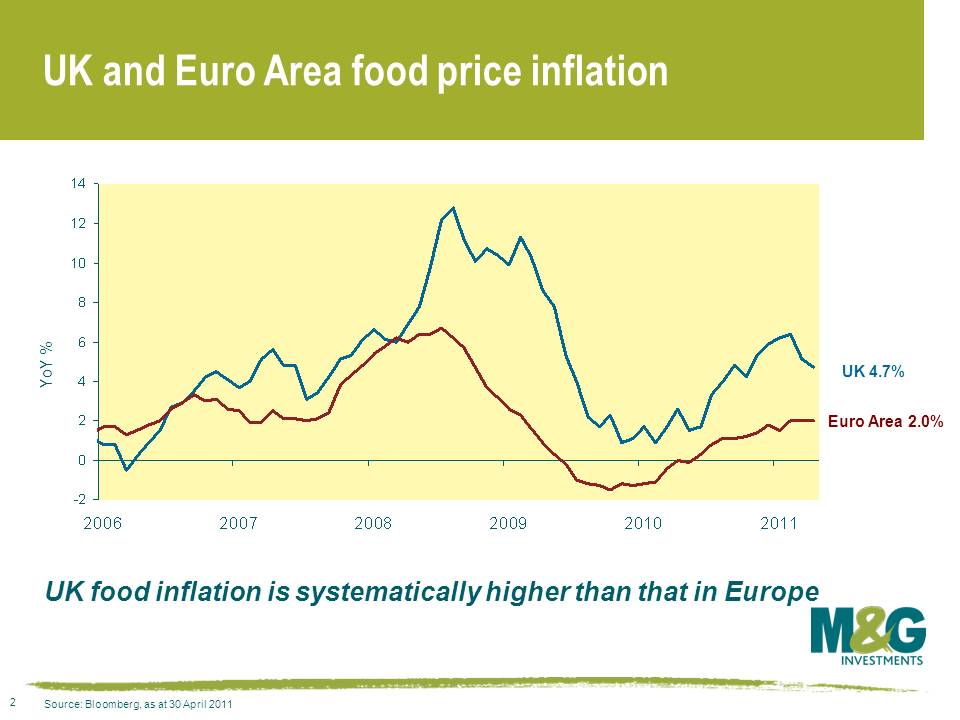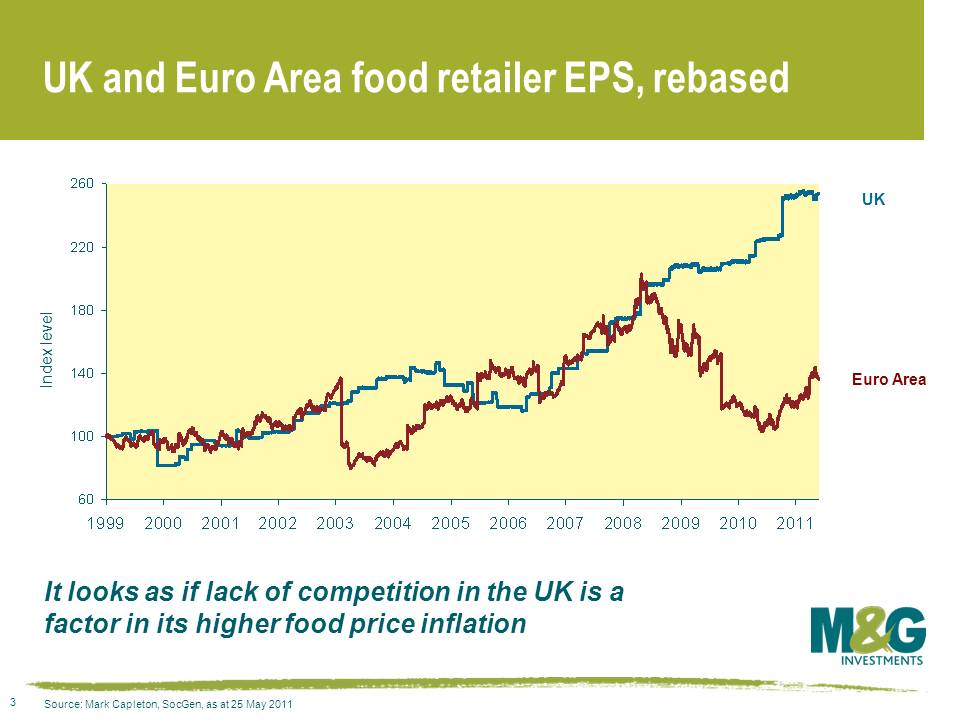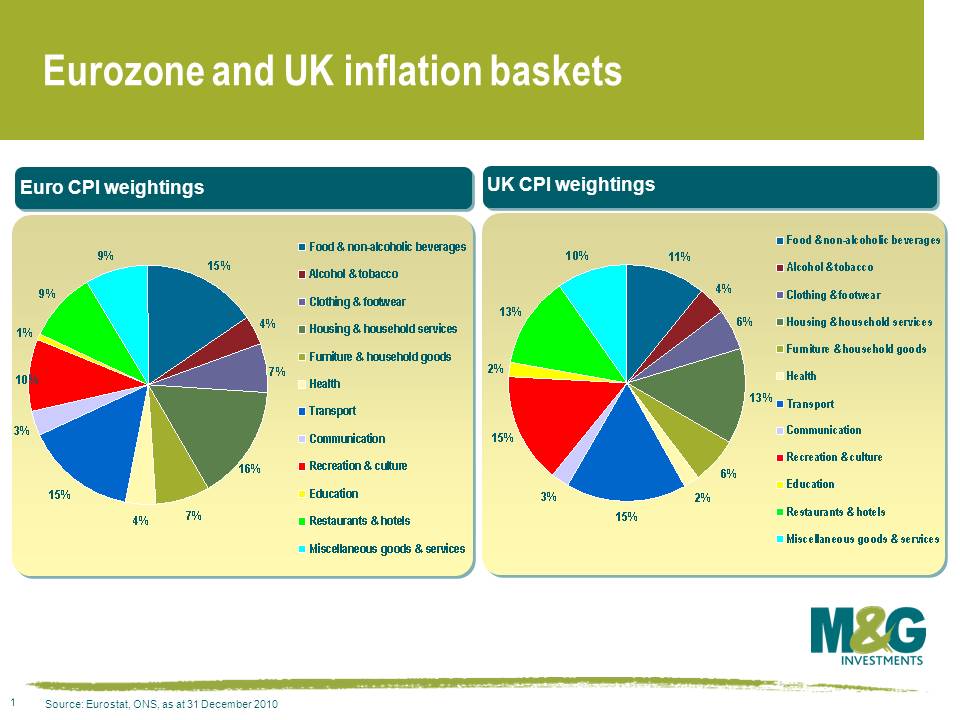Stockholm syndrome: UK consumers love their supermarkets even as food inflation runs at nearly 2.5 times that in Europe
Why is UK inflation running at a much higher rate than European inflation? The UK’s CPI is 4.5% compared with 2.7% in Europe. One answer might be food inflation, a major portion of the overall CPI baskets (11% in the UK, 15% in the Eurozone – add in alcohol and both are a little higher).
The chart below shows that the UK rate of food inflation is systematically higher than that in Europe. At the moment the year on year increase is 4.7% compared with 2%, and at times the difference has been much higher. There are times when you might explain this through £ weakness feeding into imported food prices, but the chart includes periods of both currency strength and weakness. What else might explain structurally higher food inflation in the UK?

Well the chart below from Mark Capleton of SocGen might be at least part of the answer. It shows earnings per share (EPS) growth for UK and European food retailers. When food price inflation started to moderate post the last shock in 2008, European food retailers cut prices. In the UK the supermarkets realised that they had pricing power and kept raising them; this resulted in the strong relative profitability that they enjoyed. There might be other factors involved – the UK supermarkets have massively diversified into non-food goods (everything from clothing to DVDs to insurance), but it does look like UK consumers are being hit by the lack of competition in the food retail sector.

The BBC Watchdog survey from 2009 shows that only 2% of respondents were “very dissatisfied” with their supermarket (about half were actively “very satisfied”). Yet they claim that price is the most important thing in their choice of shop. Stockholm Syndrome is a “paradoxical psychological phenomenon wherein hostages express empathy and have positive feelings towards their captors”.
The value of investments will fluctuate, which will cause prices to fall as well as rise and you may not get back the original amount you invested. Past performance is not a guide to future performance.


18 years of comment
Discover historical blogs from our extensive archive with our Blast from the past feature. View the most popular blogs posted this month - 5, 10 or 15 years ago!


Bond Vigilantes
Get Bond Vigilantes updates straight to your inbox






